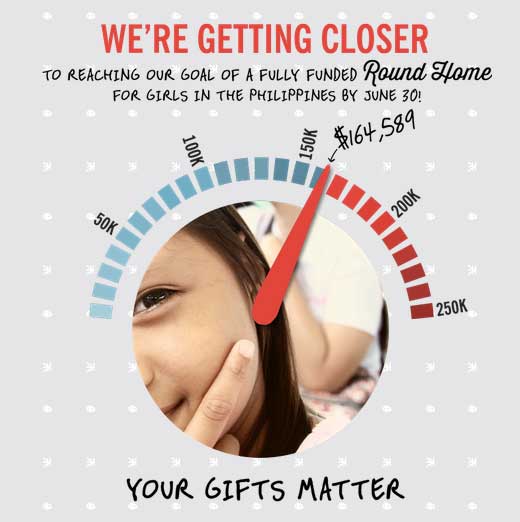6 Ways to Motivate Fundraisers During Your Campaign

The success of your peer-to-peer fundraisers can drastically affect your campaign’s bottom line. While they are the ones asking for donations, you should engage and support them every step of the way. This means that you need to keep an open line of communication to continually coach, excite, and inspire them to hit their goals.
Check out these six ways to motivate fundraisers throughout your entire campaign.
1. Deliver Regular Campaign Updates
Maintain an ongoing correspondence with your fundraisers throughout your campaign. Consider sending them weekly or bi-weekly updates about how much your campaign has raised, and encourage them to keep up their efforts. Not only does this motivate them by conveying a sense of progress, but it also reminds supporters of how their individual campaign is contributing to a collective goal.
Since graphics are easily digestible, try whipping up a visual, like a progress bar, to demonstrate how much your organization has raised so far. Check out this cool meter example from Love146.

And, when you update fundraisers, make sure to connect the amount raised with its impact in the field. You might say, “We’ve raised $2,000 so far! That sends 75 children to school, complete with classroom supplies.” Inspire fundraisers by showing them the tangible results of their efforts so far.
2. Celebrate Their Fundraising Milestones
An excellent way to motivate fundraisers is to recognize all the hard work they’re putting into their personal campaigns. One approach is to prepare automated emails in response to their fundraising activity.
For instance, you can schedule messages that congratulate fundraisers for hitting 25, 50, or 75 percent of their fundraising goals. These kinds of acknowledgements motivate supporters to keep up their efforts. At the same time, this level of personalized recognition helps them feel like you’re paying attention to their involvement and cheering them on.
3. Send Inactive Fundraisers Encouragement and Advice
As your campaign continues, there will likely be fundraisers that have set up a fundraising page but have not raised any money. These inactive fundraisers have taken the first step to reeling in funds; they just need a gentle push to get started.
Once their pages have been inactive for several days, start sending this group of fundraisers targeted messages to reengage them. Don’t wait too long before you reach back out; the longer you wait, the harder it will be to motivate them to take action.
In your emails, thank them for helping you achieve a collective campaign goal and make a meaningful difference for your cause. Then offer tips to help them get started. For example, you can provide sample email copy they can send to their friends. You can start your message with something like:
Hey Casey,
Get started on preserving our amazing forests. Use the sample email below to send personal emails to five people, and include a link to your page. Hit up your parents, siblings, or best friends—people who you know will be excited to support you.
You can also give fundraisers creative ideas for their personal fundraising campaigns, whether it’s to do a pushup for every dollar donated, or to dye their hair a different color if they reach their fundraising goal. Sometimes fundraisers just need some brainstorming help to get started.
4. Recognize Your Top Fundraisers
In the same way you should attend to your inactive fundraisers at the start of your campaign, you should definitely identify those who are raising big bucks for your organization. Reach out and acknowledge these power fundraisers, which in turn can motivate them to take their fundraising to the next level.
On top of sending them personalized thank you messages, make them feel extra special by showing them some public recognition. Consider highlighting your top five or ten fundraisers in your email communications. Not only does this give them the public spotlight, but it also reminds the rest of your fundraising community that there are others working towards the same goal.
In addition to recognizing top fundraisers, you can turn their personal insights into a fundraising tool for other supporters. When highlighting an individual, have them share their personal advice on how they’re achieving success. You can conduct a Q&A and post their answers on your blog or in your fundraising emails.
You can also send out a survey to collect answers from multiple supporters, compile them into a single resource, and deliver it to all supporters as an insider tip sheet from fellow fundraisers. By sending out these resources, you can enhance the feeling of a larger, involved community to new fundraisers and inspire them to play a bigger role.
6. Add Fundraising Incentives
Fundraising campaigns often hit a slump midway. To overcome this predictable lull, prepare incentives that you can announce when activity starts to drop. Consider dishing out swag or registration discounts for your next event to supporters who hit certain fundraising levels. Exciting announcements like these can revive activity and lift supporters up from the sidelines.
Another incentive you can broadcast is a donation match period. Supporters love to see their dollar stretched, so a donation match with a specific timeframe can spur urgency and excitement among your community.
Peer-to-peer fundraisers are going above and beyond for your organization, but they need your support to succeed. Your fundraisers are making the asks, but it’s your job to keep their spirits high and effectively engage them throughout the process. Update them about how their involvement is making an impact, and continue to educate and arm them with sound fundraising advice and ideas. By keeping them excited about their involvement, you can maximize your overall fundraising success.




